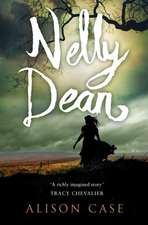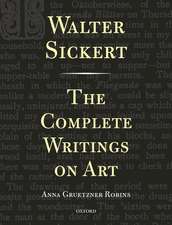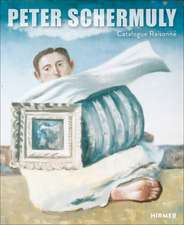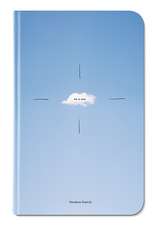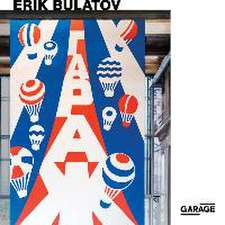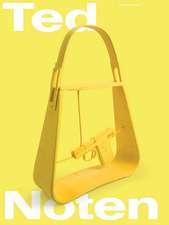Traces of Vermeer
Autor Jane Jelleyen Limba Engleză Paperback – 8 ian 2019
| Toate formatele și edițiile | Preț | Express |
|---|---|---|
| Paperback (1) | 83.25 lei 10-16 zile | +34.49 lei 5-11 zile |
| OUP OXFORD – 8 ian 2019 | 83.25 lei 10-16 zile | +34.49 lei 5-11 zile |
| Hardback (1) | 154.41 lei 31-37 zile | +69.59 lei 5-11 zile |
| OUP OXFORD – 27 iul 2017 | 154.41 lei 31-37 zile | +69.59 lei 5-11 zile |
Preț: 83.25 lei
Preț vechi: 97.18 lei
-14% Nou
Puncte Express: 125
Preț estimativ în valută:
15.93€ • 16.57$ • 13.15£
15.93€ • 16.57$ • 13.15£
Carte disponibilă
Livrare economică 13-19 martie
Livrare express 08-14 martie pentru 44.48 lei
Preluare comenzi: 021 569.72.76
Specificații
ISBN-13: 9780198789734
ISBN-10: 0198789734
Pagini: 368
Ilustrații: 85 colour illustrations
Dimensiuni: 147 x 216 x 17 mm
Greutate: 0.5 kg
Editura: OUP OXFORD
Colecția OUP Oxford
Locul publicării:Oxford, United Kingdom
ISBN-10: 0198789734
Pagini: 368
Ilustrații: 85 colour illustrations
Dimensiuni: 147 x 216 x 17 mm
Greutate: 0.5 kg
Editura: OUP OXFORD
Colecția OUP Oxford
Locul publicării:Oxford, United Kingdom
Recenzii
This is not another speculative Vermeer biography, a fill-in-the-gaps, guesswork life. This is Vermeer the painter, by a painter.... Jelley's meticulous approach yields fascinating insights.
Well-researched... vivid... fascinating.
The exquisitely luminous paintings of Johannes Vermeer have long stirred debate over whether the seventeenth-century Dutch master used optical aids. Artist Jane Jelley probed the issue pragmatically.
The appeal of Jelley's elegant book is the product of her literary style and the abundant reproductions of Vermeer's work and that of his contemporaries. Jelley's volume is a work of art in itself.
Fascinating. Jelley brings a vast knowledge, and, more importantly, practice, of traditional painting techniques... she proposes a novel suggestion as to how exactly Vermeer could have used a camera obscura... A boon to both scholars and casual art appreciators.
Along the way... Jelley infuses her descriptions of Vermeer's world with a vivid immediacy, taking readers into the hustle and bustle of market day in Delft... It quickly becomes an immersive reading experience, like an excellent historical novel with 62 pages of fine-type end notes attached to help with further inquiries.
In this overtly investigative yet very readable book [Jane Jelley] bequeaths the reader with an inexorable intrigue that is altogether contagious.
Magnificent.
Sensational... revelatory and wholly convincing.
A fascinating approach that throws up a plethora of intriguing details that add to the texture of Vermeer's life and technique... Jelley's ingenious experiment offer[s] a plausible suggestion as to how he set about his magical paintings.
Traces of Vermeer is an intriguing account of artistic practice... [Jane Jelley's] writing is fluid and poetic, and this publication is an enjoyable read, feeling like a detective story from the outset... [the] discoveries made by the author in this book... give us valuable insights that will influence the way we view and interpret Vermeer's paintings and mysterious working practices.
An absolute delight. A rich and highly original exploration of Vermeer's life and work seen through the eyes of a practising painter.
Featuring wonderful illustrations, engaging prose, and a deep knowledge of the craft, this is a study in art history and methodology to delight an audience beyond just visual artists.
Jane Jelley adds a unique perspective on Vermeer's techniques and style.
Well-researched... vivid... fascinating.
The exquisitely luminous paintings of Johannes Vermeer have long stirred debate over whether the seventeenth-century Dutch master used optical aids. Artist Jane Jelley probed the issue pragmatically.
The appeal of Jelley's elegant book is the product of her literary style and the abundant reproductions of Vermeer's work and that of his contemporaries. Jelley's volume is a work of art in itself.
Fascinating. Jelley brings a vast knowledge, and, more importantly, practice, of traditional painting techniques... she proposes a novel suggestion as to how exactly Vermeer could have used a camera obscura... A boon to both scholars and casual art appreciators.
Along the way... Jelley infuses her descriptions of Vermeer's world with a vivid immediacy, taking readers into the hustle and bustle of market day in Delft... It quickly becomes an immersive reading experience, like an excellent historical novel with 62 pages of fine-type end notes attached to help with further inquiries.
In this overtly investigative yet very readable book [Jane Jelley] bequeaths the reader with an inexorable intrigue that is altogether contagious.
Magnificent.
Sensational... revelatory and wholly convincing.
A fascinating approach that throws up a plethora of intriguing details that add to the texture of Vermeer's life and technique... Jelley's ingenious experiment offer[s] a plausible suggestion as to how he set about his magical paintings.
Traces of Vermeer is an intriguing account of artistic practice... [Jane Jelley's] writing is fluid and poetic, and this publication is an enjoyable read, feeling like a detective story from the outset... [the] discoveries made by the author in this book... give us valuable insights that will influence the way we view and interpret Vermeer's paintings and mysterious working practices.
An absolute delight. A rich and highly original exploration of Vermeer's life and work seen through the eyes of a practising painter.
Featuring wonderful illustrations, engaging prose, and a deep knowledge of the craft, this is a study in art history and methodology to delight an audience beyond just visual artists.
Jane Jelley adds a unique perspective on Vermeer's techniques and style.
Notă biografică
Jane Jelley is a painter, specializing in still life and landscape, who became intrigued by the unusual qualities of Vermeer's pictures, and the lively arguments about whether he used a camera obscura. Familiar with traditional materials, Jane decided to find out for herself whether there was a practical way to transfer an images from a lens to a canvas, and she published a paper about her experiments in 2013. Jane lives and works in Oxford.

